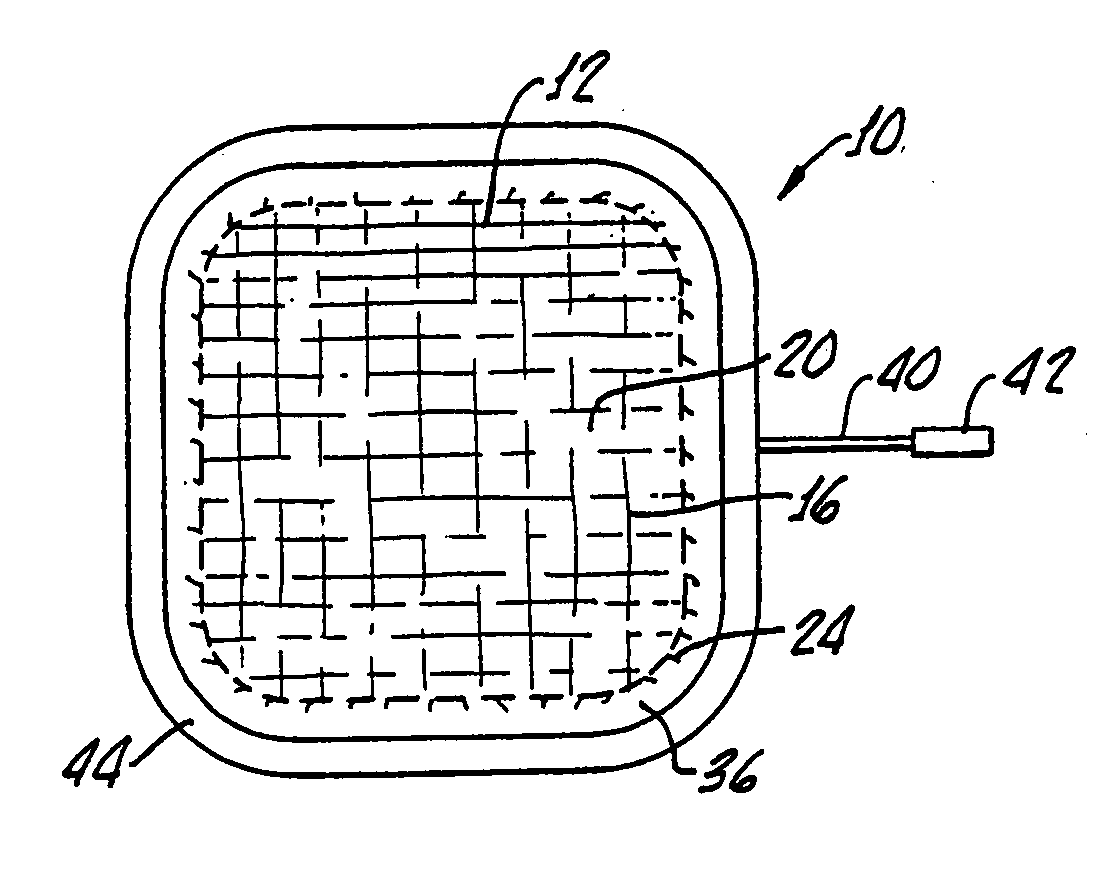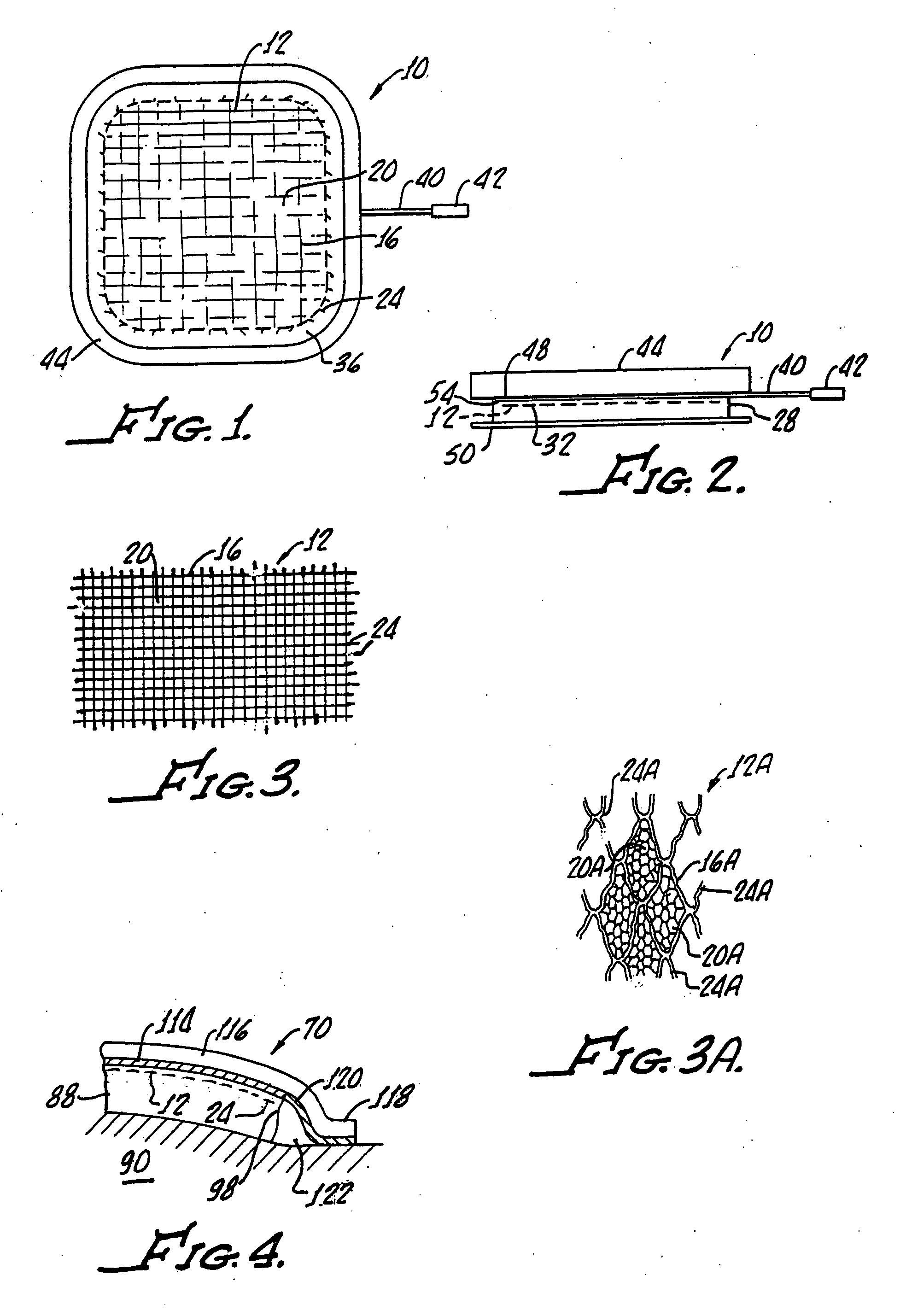Differential diameter electrode
- Summary
- Abstract
- Description
- Claims
- Application Information
AI Technical Summary
Benefits of technology
Problems solved by technology
Method used
Image
Examples
Embodiment Construction
[0038]With reference to FIGS. 1 and 2, there is shown a flexible transcutaneous electrical nerve and / or muscle stimulation electrode 10 in accordance with the present invention. Conductive fabric 12, 12A best seen in FIGS. 3 and 3A includes fibers 16, 16A with interstitial areas 20, 20A therebetween. Any suitable conductive fabric 12, 12A may be utilized. As shown, the fabric 12, 12A may have loose ends, or frays, 24, 24A providing a potential for “hot spots” as hereinabove described.
[0039]A flexible conductive adhesive 28 of any suitable composition is disposed within the interstitial areas 20 and on one side 32 of the fabric 12, 12A as best seen in FIG. 2. The conductive adhesive 28 provides adherence of the electrode 10 to the skin of the patient (not shown) and provides an electrical conducting contact therebetween. As shown, the adhesive 28 has dimensions greater than corresponding dimensions of the conductive fabric 12, 12A in order to provide a border, or barrier portion, 36 ...
PUM
 Login to View More
Login to View More Abstract
Description
Claims
Application Information
 Login to View More
Login to View More - R&D
- Intellectual Property
- Life Sciences
- Materials
- Tech Scout
- Unparalleled Data Quality
- Higher Quality Content
- 60% Fewer Hallucinations
Browse by: Latest US Patents, China's latest patents, Technical Efficacy Thesaurus, Application Domain, Technology Topic, Popular Technical Reports.
© 2025 PatSnap. All rights reserved.Legal|Privacy policy|Modern Slavery Act Transparency Statement|Sitemap|About US| Contact US: help@patsnap.com


